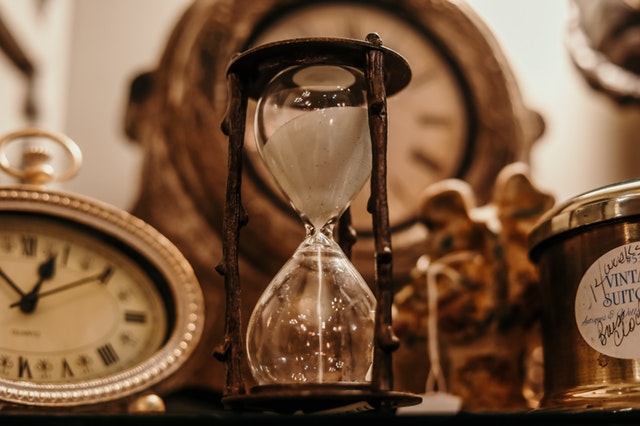On January 23, 2020, scientists moved the hands on the Doomsday Clock to 100 seconds to midnight. But what is the Doomsday Clock—and why is this so concerning?
The Doomsday Clock is a project that has been running since 1947. The clock is symbolic, and it is meant to represent how close humanity is to “global catastrophe.” It has been maintained by The Bulletin of Atomic Scientists, but the threat of nuclear conflict is not the only threat that they consider in their analysis. They also look at other challenges facing humanity—and yes, climate change is a major reason that they believe we are inching closer to “Doomsday.”
Have the hands on the clock always inched closer to midnight? No—the scientists have shifted them backward plenty of times throughout the history of the project. For example, when the project began, the hands stood at seven minutes to midnight. The scientists have adjusted them a grand total of twenty-three times since then. And there have been years when it looked like humanity had made major progress, and the world was genuinely becoming safer, stable, and more peaceful. For example, in 1991, the clock stood at seventeen minutes to midnight, which is the best status we’ve ever had.
This year, The Bulletin of Atomic Scientists worked with another group, The Elders, to adjust the clock. The Elders are a group of world leaders who were originally brought together by Nelson Mandela in 2007. These two organizations evaluated the state of global affairs and came to the conclusion that humanity is in an extremely precarious position.
Why have the hands on the clock been moved closer to midnight than ever before? The scientists have offered an explanation behind their reasoning. First, there is the increasing threat of nuclear conflict. Granted, the threat level is not as high as it was during the Cold War, but recent hostility between global superpowers makes the situation riskier than it was in previous years. Furthermore, the scientists cited “cyber-enabled information warfare.” It is easier than ever for misinformation to spread.
And finally, the scientists stated that climate change—and the lack of adequate response to this environmental crisis—is another major reason that the clock is ticking closer to midnight. Overall, it’s not just the myriad of challenges facing humanity that account for the current status of the clock. It’s also the fact that we’re not mobilizing to move forward with real solutions.
What do these scientists and experts believe we should do to address these threats? Well, the answers seem relatively obvious, although working towards these solutions will not be a simple or easy process by any means. They believe that world leaders should come to the negotiating table to continue working on nuclear de-proliferation and reducing the number of nuclear weapons still in existence. Furthermore, they also believe that working towards the goals of the Paris Climate Agreement would be a step in the right direction to address the current climate crisis, and ideally, the United States would rejoin the agreement.

Where the hands stand on the Doomsday Clock is not an exact prediction for the date of the apocalypse. But it is alarming that these experts believe we are closer than ever before. And it’s worth noting that just because a prediction seems “extreme,” that doesn’t mean the claim can be written off as alarmist fear-mongering. We can’t refuse to see the truth just because it causes us discomfort. We really are facing challenges that most leaders seem to have little to no motivation to address. While a potential nuclear conflict is unlikely due to the certainty of mutually assured destruction, there is no question that the planet is getting hotter, and climate change poses an unprecedented threat to humanity.
Unfortunately, these warnings from the scientists and world leaders behind the Doomsday Clock project are unlikely to make much of an impact. This is far from the first time that scientists have warned us about the dire threats we’re facing. Perhaps if we had started working to address these issues on a global scale decades ago, the hands on the Doomsday Clock would not be so close to midnight. But instead, we’ve waited so long to tackle the climate crisis that our future is uncertain—and the longer we wait to act, the worse it’s going to look. We still have the power to turn back the hands on the clock. We don’t have to wait until it’s too late, and reaching “midnight” becomes inevitable. But we can’t keep stalling on progress—it’s never been more clear that the time to move forward is now.
__
Photo: Pexels




